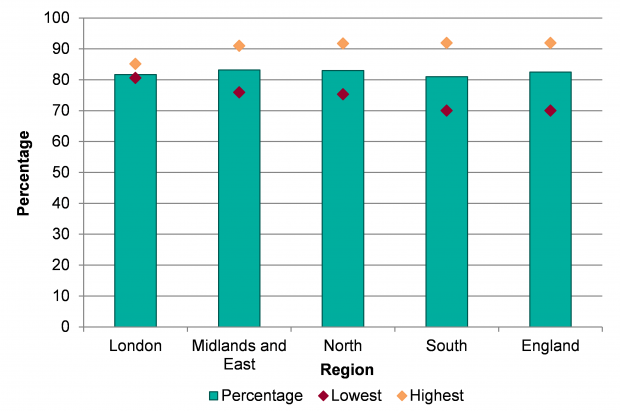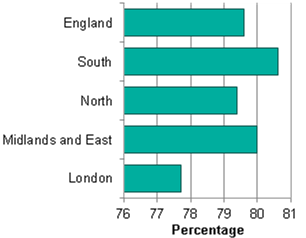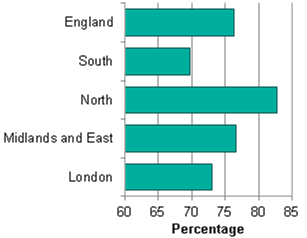Today, we are delighted to publish annual diabetic eye screening data by local provider in England for the period 1 April 2015 to 31 March 2016.
This is the first time PHE Screening has been able to publish such data. Many thanks to our local providers for all their help.
Diabetic eye screening reduces the risk of sight loss among people with diabetes through the early identification of sight-threatening diabetic retinopathy, appropriate follow-up and treatment.
Common pathway software
Since November 2013, local providers in England have been moving to software that is compliant with the common pathway for diabetic eye screening.
This means every provider now uses a common dataset and common way of reporting. As a result, we now have comparable data that we can report nationally to help drive up quality and consistency.
We have been working with providers and software suppliers to ensure the data reporting is accurate.
1 April 2015 to 31 March 2016 is the first screening year that most local providers (68 out of 70) have been able to report full common pathway compliant data.
It is also the first year that we’ve asked for data reported by responsible clinical commissioning group (CCG). The responsible CCG is the CCG that includes the GP practices that refer into a particular service.
The CCG level data is not as complete as the provider level data due to changes in service provider and boundaries but this should improve in the future.
Highlights of the data
More than 2 million eligible people with diabetes were screened between 1 April 2015 and 31 March 2016. This equates to an uptake of routine digital eye screening of 82.5%.
Uptake ranged from 70.0% to 91.9%. All providers met the acceptable threshold of 70.0%.

Local providers referred 7,255 people to hospital eye services for proliferative diabetic retinopathy (1 in 279 people screened). Of those, 79.6% attended a consultation with a specialist within 4 weeks of notification of their positive screening result.
Local providers referred 49,658 people to hospital eye services for pre-proliferative diabetic retinopathy (1 in 41 people screened). Of those, 76.4% attended a consultation with a specialist within 18 weeks of notification of their positive screening result.


We continue to work with providers to improve data quality and better understand variation in performance.
These slides explain and support the data tables.
You can view the diabetic eye screening: 2015 to 2016 data tables in full on GOV.UK.
PHE Screening blogs
PHE Screening BLOGs provide up to date news from all NHS screening programmes – replacing our previously published newsletters.
You can register to receive updates direct to your inbox, so there’s no need to keep checking for new blogs.